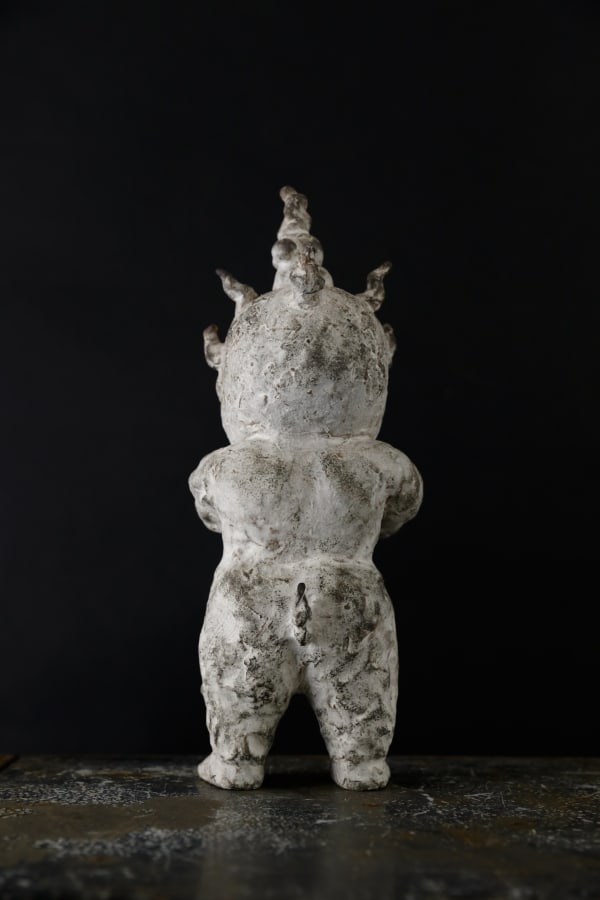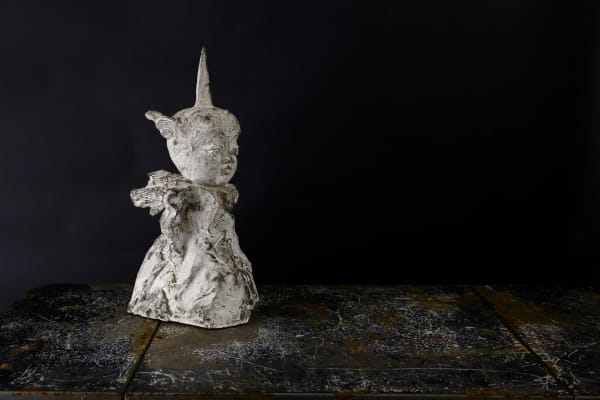OKAMI | Wolf & The Elemental Spirits of Nature: Ceramic sculpture by Harumi Noguchi
“There was a time when I was small that I was looked after by a cross between a Japanese wolf and a dog.
Like foxes and deer, wolves are said to be messengers of the gods, while simultaneously they are revered as gods in their own right. It can be said that the wolf symbolizes mountain worship, in which it is believed that mountains give birth to the bounty that governs the whole cycle of life and death”.
– Harumi Noguchi
Ippodo Gallery New York is delighted to announce that from December 8, it will be presenting Harumi NOGUCHI’s second exhibition of sculpture in New York, entitled OKAMI—The Wolf and The Elemental Spirits of Nature.
Since ancient times the Japanese people have believed that ‘Kami’, elemental spirits, inhabited the plants and wind, the mountains, seas, forests, and rivers. Even today, when we walk through the countryside we frequently come across shrines dedicated to these elemental spirits. Using clay as her medium, the remarkably talented woman sculptor, Harumi NOGUCHI , recreates the demons and spirits that appear in ancient Japanese tales or legends, as well as some of the countless gods that reside in nature.
Born in Tokyo in 1954, NOGUCHI delighted in reading books on mythology, legends and old tales from an early age, becoming fascinated with the view of nature held by the Japanese of the eighth century when Japan’s oldest books, the Kojiki and the Nihon Shoki were written. As she grew, she played with the spirits that inhabited the great trees of the forests and whenever she stepped into the sea or a river, she fantasized that she was coming into direct contact with the god of water. She devoted herself to the study of documents and literature, becoming deeply versed in the Japanese character and folk beliefs. “The faith of the Japanese is based on an awareness of a vast, invisible power. As soon as a people is no longer able to feel this power, the beauty of their country will fade.” She was in her forties when she began to work in clay and ever since she has concentrated on the creation of thee-dimensional sculptures that express her unique worldview. She says that when she is working, she sometimes feels that her body is unable to keep up with the images that flow from her mind. It is as if the elemental spirits have taken over her hands in order to embody themselves in this world, appearing in an abundant variety of guises, richly individualistic and displaying lively expressions.
The title of this exhibition, ‘OKAMI’, can mean either ‘wolf’ or ‘great god’ depending on the Japanese characters used to write it. This has a great significance for NOGUCHI as when she was small, her grandmother kept dog that was a cross between a Japanese wolf and a dog and it protected her when she was small. In the area stretching from Mt. Mitsuminesan to Mt. Mitakesan, northwest of Tokyo, the shrines devoted to mountain asceticism, have statues of wolves, known as ‘Oinu-sama’, enshrined at their entrances in place of the usual guardian dogs and from this we can see that the ancient worship of wolves remains alive in Japan to this day.
Like foxes and deer, wolves are considered messengers of the gods, and in ancient times they were venerated as gods in their own right under the name, ‘Okuchi’ (Big Mouth). Ms. Noguchi believes that as the apex predator, the wolf symbolized the rich cycle of life and death upon which mountain worship is based and that is why it was given the name ‘Okami’ (great god).
Her works take us back to the primordial beliefs of Japan. They are neither judgmental nor subservient; they exist humbly and kindly together with nature, representing countless prayers to the souls that live within tiny things. Today, people think only of personal profit, destroying the mountains for the wealth they contain, polluting the oceans and slaughtering vast numbers of living creatures through the reckless exploitation of resources. The Japanese wolf is now extinct but we hope that the works in this exhibition will allow you to feel the close relationship that once existed between nature and humankind, taking you back to a vivid world, full of life. As NOGUCHI says, “I hope that this solo exhibition will provide an opportunity for everybody to consider ‘the Japanese, God and religion’. ”
Harumi Noguchi from Shoko Aono on Vimeo.

























